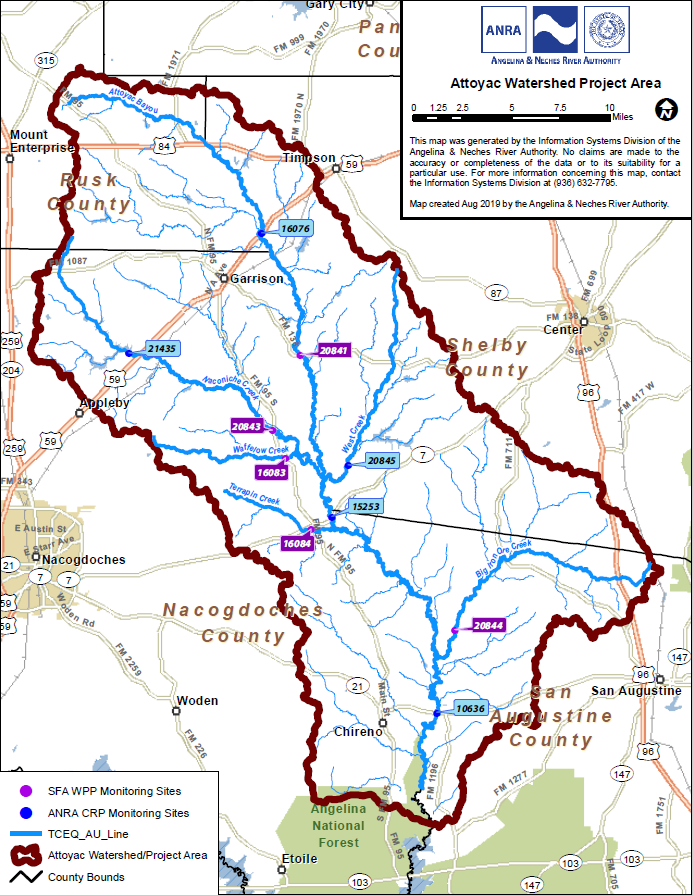August is water quality month and Texans with septic systems can help improve local water quality by making sure it is working properly.
Septic systems — known as on-site sewage facilities, or OSSFs — work like mini wastewater treatment facilities for rural or suburban Texans who live too far away to connect to a city’s sewer system. There are over 2.2 million known septic systems operating in Texas today. But they also have the potential to negatively impact local water quality, and human health as a result, by spreading bacteria if they are not functioning properly.
Ryan Gerlich, Texas A&M AgriLife Extension program specialist for AgriLife Extension’s OSSF program, explained that design, placement and general maintenance all play a role in keeping systems functioning properly. If an OSSF’s design doesn’t meet the needs of the people living in the household — if it is too small, for example — it may not work properly. Placement also plays a role. Gerlich explained that, prior to 1989, there was no statewide guidance on installing OSSFs and many systems were installed in places where they could not work as well as they should.
“If we put a conventional septic tank with a gravity-fed drain field in an area with a high clay content or where there’s a lot of rock or fractured rock, the soil is not going to accept or treat the water at the rate that we’re applying it,” Gerlich said.
“Usually with a failing system the water will come up to the surface and can run off into the nearby stream or water body.”

Problems can also arise if the water table is high in an area.
“In that scenario, the system doesn't provide much treatment because the effluent is coming out of the system and mixing right there with the groundwater,” Gerlich said.
Physical damage to the system that allows for leaking or events that cause overflows will have a similar effect; untreated or improperly treated wastewater will escape into the environment. Wastewater can carry human pathogens that cause gastroenteritis and diseases such as cholera and typhoid as well as damage local water quality.
“Many of the homes that are on a septic system are also on a private water well, so if we don't have the appropriate system for a given soil, there's the possibility of contaminating the drinking water,” Gerlich said.
Emily Monroe, Extension program specialist with the Texas Water Resources Institute (TWRI) who has done recent work with the Attoyac Bayou OSSF remediation project, voiced similar concerns about wastewater contamination around the home.
“If you have a wet spot on your property that never dries up even in a drought and your kids or grandkids are playing out there, that is human waste they’re playing in,” she explained. “That is 100% a huge human health issue.”
Continual standing water from an improperly functioning OSSF can also attract mosquitoes and give them a place to breed. Mosquitoes are vectors for many diseases that can harm humans, pets and wildlife, including dengue fever in people, heart worm in pets and West Nile virus in people and animals.
Potential health impacts resulting from OSSF-related water quality problems can travel downstream too. Literally.
“People use water for recreational purposes, like boating and fishing,” noted Nathan Glavy, Extension program specialist with TWRI.
“If the waste from an OSSF gets into the local waterway, it can cause a huge concern if you are eating the fish from the stream or you are recreating in it. It can cause some serious health complications,” he said.
Cost concerns and potential funding
OSSFs not performing properly should be repaired or replaced to help protect local water quality and human and ecological heath. Unfortunately, repairing or replacing an OSSF can be expensive. However, there are ways Texans can learn more about potential funding aid opportunities in their area:
• Talk to your watershed coordinator – Watershed protection plans (WPPs) are developed to address impaired water bodies across Texas. WPPs for water bodies with bacterial impairments sometimes include funding for addressing OSSF problems. The watershed coordinator would know if there is OSSF-related funding associated with a WPP and how to go about applying for it.
“Or they could work with their watershed coordinator to write a grant and say, ‘Hey, we need help in this area,’” Monroe recommended. “That would be a really good way to get funding if there’s not any.”
Texans can find out if they are living in a watershed with an active WPP, and find the associated watershed coordinator, by visiting the Nonpoint Source Project Viewer by the Texas Commission on Environmental Quality (TCEQ).
• Talk to your county’s authorized agent – Much like a watershed coordinator, a county’s OSSF authorized agent may know of available funding opportunities within the county. To find your authorized agent, use this agent-locator tool by TCEQ.
• Reach out to AgriLife Extension and AgriLife Extension agents – AgriLife Extension personnel specializing in OSSFs like Gerlich may be able to help Texans identify potential funding sources to help address OSSF problems. Similarly, you can reach out to your local county AgriLife Extension agent. Search here to find your local AgriLife Extension office and coordinator.
Other OSSF resources
“When you are a private landowner with a septic system, you’re basically running a whole wastewater treatment facility on your property,” Glavy said, calling education key to keeping OSSFs working properly.
AgriLife Extension, TWRI and TCEQ all have good resources for homeowners interested in learning more about keeping their systems maintained and problem signs to look for. Some selected resources include:
- AgriLife Extension OSSF website
- Factsheet 5227: Septic Tank/Soil Absorption Field (En español)
- Factsheet 6077: Selecting and Permitting (En español)
- Factsheet 6234: Living with an Aerobic Treatment Unit and Spray Field
- OSSF information for homeowners from TCEQ
- Pipeline: Septic Systems and Point Water Protections
- TWRI’s Septic System Maintenance and Inspection Pocket Guide
Despite the potential for problems, Gerlich said that a properly functioning system is a great thing.
“If it’s a properly designed, installed and maintained system, it should have minimal to no impact the nearby water bodies or the groundwater.”



